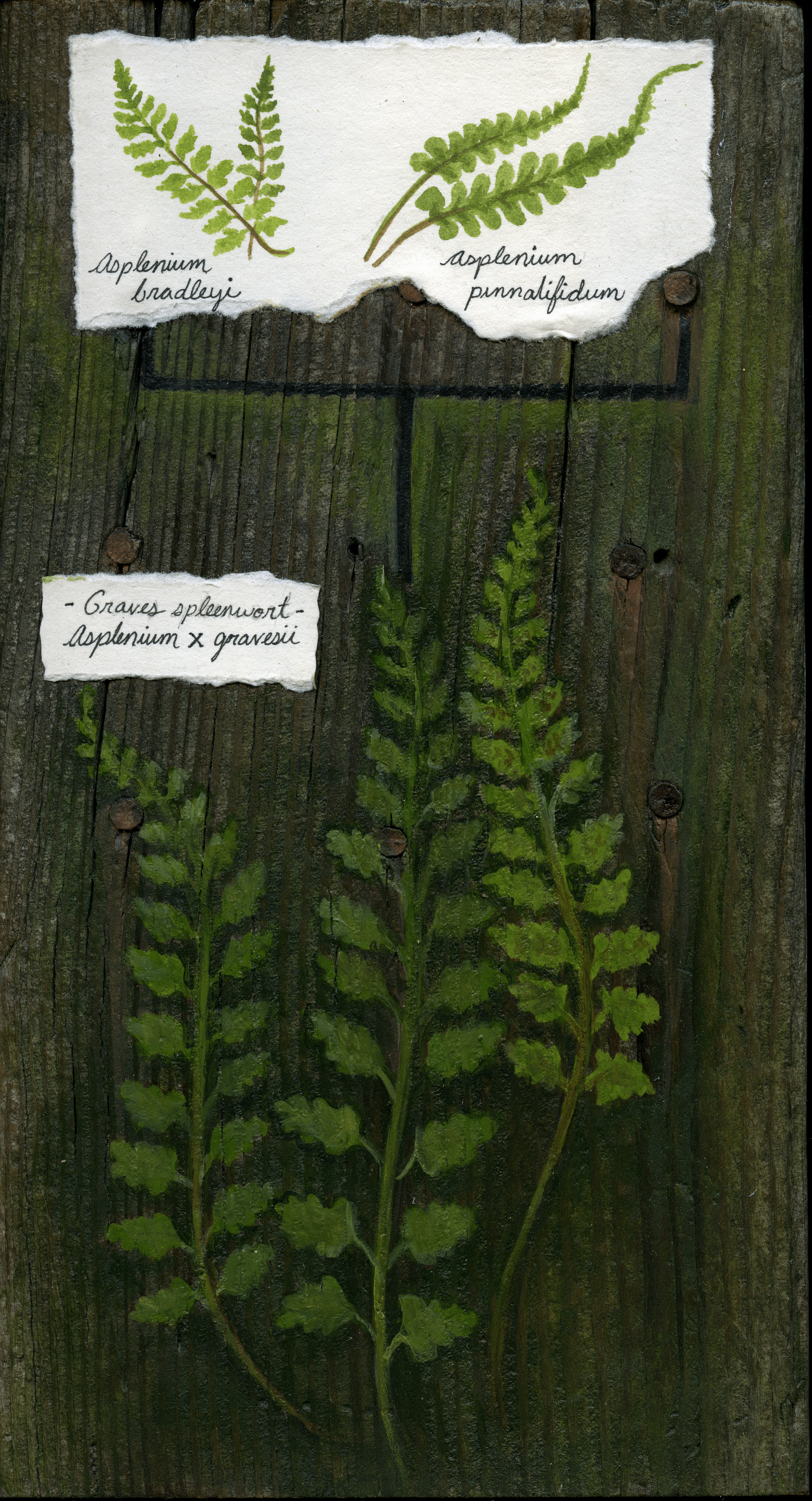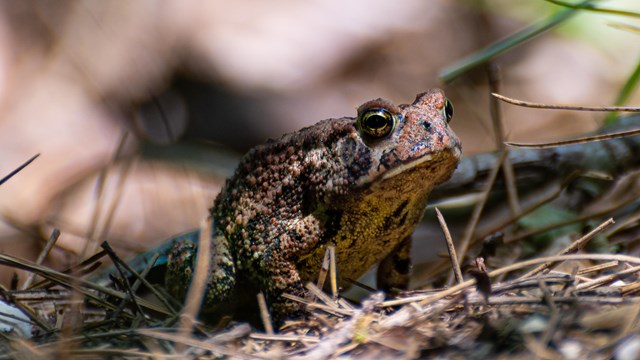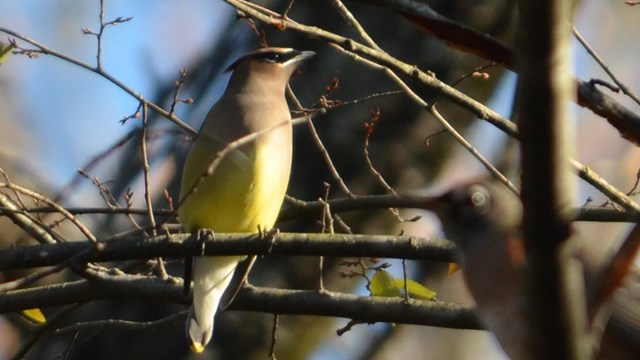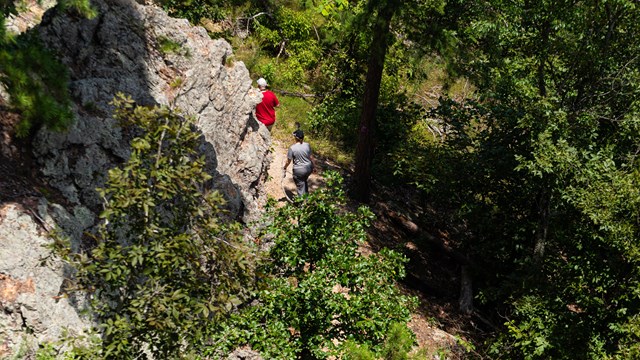
NPS Photo/Mitch Smith A Special HabitatThere are a few special plants that have adapted to live near the thermal springs at Hot Springs National Park. Over thousands of years our springs have slowly deposited minerals forming what is called "tufa". Tufa is formed as lime-rich water evaporates, leaving behind a soft and porous calcium carbonate rich rock.Tufa deposits form a unique habitat for a diverse flora. Bryophytes (mosses, ferns, spleenworts etc.) and diatoms are well adapted and often found. The porosity of the tufa forms a wet habitat ideal for these types of plants. Porous rocks such as tufa have lots of surface area and create a large boundary layer around their edges that acts as a slightly different "micro-habitat" that retains water very well. Water is very important to the reproduction process of many of these species. 
Woodland Stonecrop picture on left: CC photo by Fritz Flohr Reynolds Unlikely NeighborsArkansas bedstraw (Galium arkansanum var.pubiflorum) is a rare variety of the more common bedstraws. It thrives in the acid soils of the chert and novaculite outcrops. “Bedstraw” plants have a sweet fragrance which actually gets stronger when they are dried. This trait caused them to be used to stuff mattresses in medieval times. Most of the plants have hairy or prickly stems and small white flowers. Hybrids
Becca Staszak - 2017 Spleenworts are a type of fern which means they are flowerless and seedless vascular plants which have true roots growing from a rhizome, fronds that uncurl upward, and they reproduce by spores. Spleenworts get their name from the old belief, based on the doctrine of signatures, that the fern was useful for ailments of the spleen, due to the spleen-shaped sori, (spore cluster markings), on the backs of the fern fronds. Much of this same type of thinking went into the naming of many of our springs such as kidney and liver springs. The hybrid spleenworts are rare in part because they are sterile and do not reproduce. Hybrids are the offspring of two different species or parents of the same species that have very different characteristics they are able to pass on to the next generation. The "Graves Spleenwort" pictured on the bottom of the painting to the left by former Artist in Residence Becca Staszak, is a rare, sterile, hybrid fern, named for Edward Willis Graves (1882–1936). It is formed by the crossing of Bradley's spleenwort (A. bradleyi) with lobed spleenwort (A. pinnatifidum). It is only found where its parent species are both present; in practice, this proves to be only a few scattered sites in the Ozarks, Appalachian Mountains, Shawnee Hills, and here in the Ouachita Mountains. 
NPS Photo/ Thomas Waymouth 
USDA - Gordon T. Taylor - Stony Brook University DiatomsIn a 2013 study, 16 species of unicellular algae, (diatoms), were found in or near the springs. They are the only plants that are able to live in the thermal springs. The study found 45 total species of "algae", 29 of them were cyanobacteria, ( Blue-Green Algae), which is technically not a plant. Cyanobacteria has no nucleus, no chloroplast, and no photosynthetic structures of true algae.The diatoms were only found near the lower temperature springs as they can only survive up to 95° F, (35° C). Diatoms are single-celled algae that play a big role in keeping earth's ecosystem working. They're important mediators of carbon and oxygen cycles, an integral piece of marine food webs and the principal cyclers of silica, which constitutes about 25% of the Earth's crust. Over 20 percent of the oxygen we breathe comes from photosynthesis by diatoms! 
Amphibians
Amphibians are a type of animal that spends one or more stages of life in the water. They include frogs, toads, and salamanders. 
Birding
Birding in the Park is a popular activity year-round. Learn more about the birds in the Park and our annual bird count. 
Directions to Trails & Popular Places
Walk or drive to the Park's most popular places and hiking trails. |
Last updated: October 21, 2021
